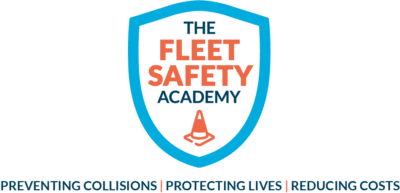Night time driving and driving in the dark in the early morning will be more common now the clocks have gone back. Driving in the dark can be challenging and according to studies 40% of all collisions occur in the hours of darkness (https://www.rospa.com/rospaweb/docs/advice-services/road-safety/drivers/driving-at-night.pdf). The Moth Effect is one cause of night time driving collisions.
The Moth Effect
Moth Effect theory suggests that many night time collisions occur when drivers are attracted to or mesmerised by lights in the dark. This is similar to the way moths are drawn to a flame. Drivers are susceptible to the glare from vehicle lights. This can be disorientating and cause them to veer off their carriageway. Drivers become attracted by stationary vehicles with flashing lights. The frequency in which stationary vehicles are hit by passing motorists supports this moth effect theory.
Accident reports do not refer to the Moth Effect so statistics are hard to find. However, researchers believe that contributing factors to the moth effect include:
- Driver fatigue and tiredness which affect driver concentration
- Poor night time vision and particularly eye tracking on flashing and non flashing vehicle lights
- The degree of lighting provided on the carriageway
- Driving in rural areas with little traffic on the road leading to reduced cognitive demand on the driver
In particular, vehicle hazard lights cause longer eye fixation durations as they attract drivers who then steer towards the flashing lights on parked vehicles. This increases the risks of collision with those drivers who have stopped on the side of the road or in an emergency stopping lane (https://www.vtti.vt.edu/national/nstsce/)
What is the meaning of driver fatigue?
During the hours of darkness when our bodies feel fatigued and we are preparing to sleep after a hard day at work, tiredness can set in quickly. Employees who are fatigued when driving are most at risk of experiencing the Moth Effect.
Fatigue is a reduction in mental or physical performance due to lack of quality sleep or disruption of the internal body clock. Work that requires constant attention also causes fatigue. Life stye and an individuals characteristics can also contribute fatigue.
The management of fatigue and employees driving whilst tired is a key issue for fleet operators. Research suggests that 20% of collisions on the road are due to highway fatigue (https://www.roadsafetyobservatory.com/Evidence/Details/11010). Fleet operators should be including fatigue management arrangements in their Driving at Work Policy documents. The policy should advise employees on how they should be managing their journeys in order to prevent fatigued driving.
Is the Moth Effect like Highway Hypnosis?
Highway hypnosis is similar to the moth effect, and occurs when the monotony of driving causes driver attention to result in a trance-like driving state. We experience this effect when we are driving and upon reaching our destination we cannot remember details of our journey, as though we were on ‘auto pilot’. However, Highway Hypnosis is a form of automaticity, the ability to perform actions without consciously thinking about them. Driving on automatic pilot is completely different to driving whilst fatigued. A person experiencing highway hypnosis will still be scanning the road for hazards. A person feeling sleepy whilst driving however will have reduced awareness of hazards on the road.
However, drivers in a trance like state can experience ‘target fixation’ on a particular object. This could be a vehicle travelling ahead, the central reservation or a parked vehicles with their lights flashing.
Nine reminders for preventing the Moth Effect
Employees involved in night time driving should follow these nine reminders:
- Be alert to the potential danger of The Moth Effect, Highway Hypnosis and target fixation
- Never tailgate and follow another vehicles tail lights
- Always reduce speed if tired, fatigued or if visibility is poor
- Slow down when driving in the dark. Slower speeds give more time to react and brake
- Take regular breaks, at least 45 minutes after driving for 4.5 hours
- If you are feeling sleepy whilst driving, best practice involves drivers taking short breaks of 10 – 15 minutes every two hours of driving. Having a caffeinated drink if they feel fatigued is also a good idea. The caffeine blocks the adenosine receptors in the brain and therefore fights the feeling of sleepiness. Another function of caffeine is that it acts as a diuretic, it forces a driver to stop for a comfort break more often than they may do normally
- Keep the blood flowing around the body by maintaining good posture behind the wheel
- Keep the interior of the vehicle cool; it’s harder to feel sleepy when the environment is not comfortable
- Prepare for the journey. This could include planning the route to include rest breaks. Keep off medication such as antihistamines that could increase drowsiness during the journey.
The number of collisions on the road goes up when the clocks go back and none of us want to experience the Moth Effect! So if you need further policies and procedures to assist with managing driver fatigue go to fleetsafetyacademy.co.uk











